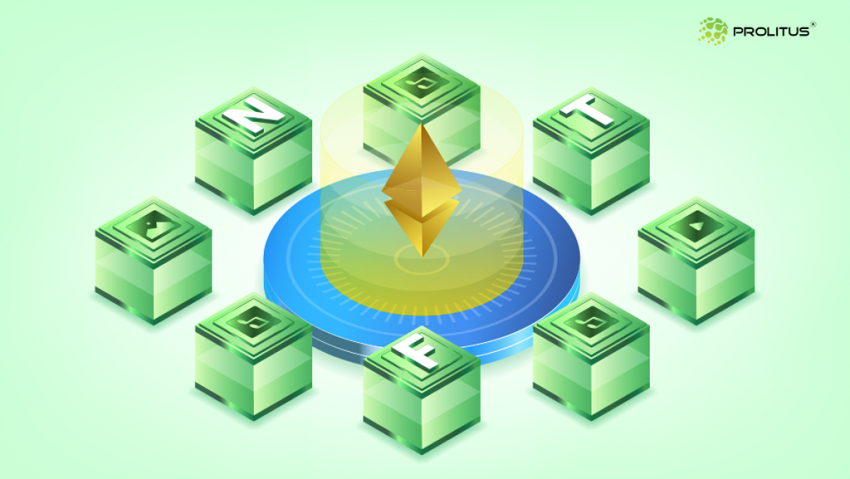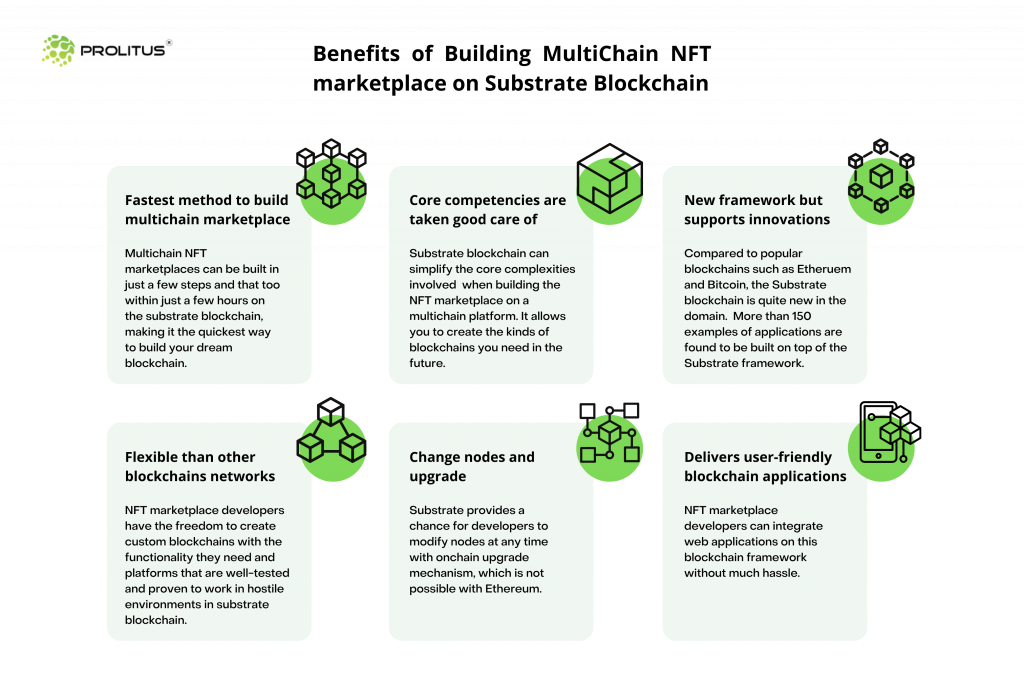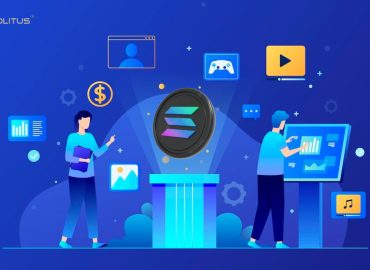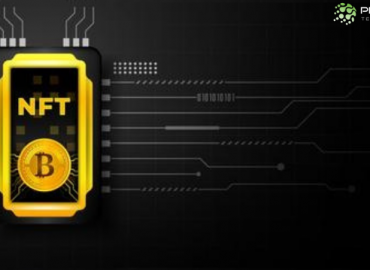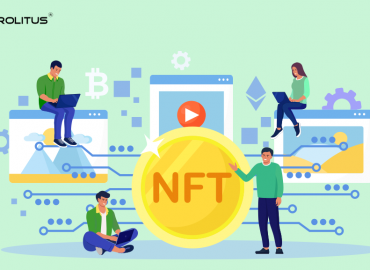Non-fungible tokens or the NFTs have taken the world of art by storm. However, its significance for investors is not just limited to the art world. This hot new digital asset class has been gaining traction from diverse industries, including music, real-estate, gaming, sports and so on. The digital assets are capturing the interest of celebrities, entrepreneurs, investors, and collectors across the breadth and length of the entire world. A higher brand value has been set for the NFTs and hence the need for setting up a flexible blockchain framework for a multichain NFT marketplace of the future is also getting stronger. To solve issues with existing blockchains, a better alternative that of substrate blockchain is present. It is considered by many experts to be a perfect platform for setting up a multichain NFT marketplace.
Introduction to NFT marketplace
NFT marketplaces are platforms where traders can buy, sell and exchange NFTs. The hottest technology of this decade is the development of the NFT marketplace. The markets for digital assets recorded a sales volume of around 10.37 billion in the third quarter of 2021, which was a testament to the growing popularity of NFTs and NFT marketplaces. Most digital assets are minted on existing blockchain networks such as Ethereum, Binance Smart Chain, Cardano, and others.
Ethereum is the most common of all blockchain networks where the NFT marketplaces are developed owing to its security features combined with the presence of smart contracts and node distributions. However, the gas fee for minting an NFT on this popular blockchain network is quite high largely for the immense traffic. NFT marketplace on multichain platforms such as the Substrate is predicted to solve the current challenges besides providing value addition with its several new beneficial features.
Why is there a need for a Multichain NFT marketplace?
With NFTs becoming a “mainstream”, the need for multichain NFT marketplaces is felt more strongly. More and more crypto investors are ready now more than ever before to put at stake piles of money on the NFTs, hoping to make big fortunes. However, the NFT space suffers limitations as there are only a few major blockchains where it can be developed. Hence, the interoperability of the NFT also starts losing steam. To answer such issues, a multichain platform is devised, thus providing a platform where NFT marketplaces can be set up on multiple blockchains.
The multichain NFT platform facilitates the minting or development of the NFTs on various blockchain technologies. The multichain system has to be compatible with other blockchains and can thus integrate different blockchain technologies. The internal structure of the multichain NFT platform should be more efficient and receptive.
Recently Substrate-based multichain NFT Marketplace Development is garnering a lot of attention from the entrepreneurs in the blockchain industry. Multi-chain NFT marketplace development on the Substrate network will be the next most popular upgrade in this technology.
What is Substrate Blockchain?
The blockchain substrate is a modular framework for blockchain creation. Any blockchain developed via the substrate may feature unique functionalities. It contains a set of libraries that are used to create a blockchain directly or modify it by adding modules and customizing settings.
Though there were a number of blockchain networks such as Ethereum, Bitcoin, and so on they all had several constraints for developers. Hence, the pioneers and veterans in the blockchain sector created Substrate – a flexible, open blockchain with several interesting features and benefits. This blockchain was designed to override all the limitations and challenges posed by previous-generation networks. It attempts to eliminate the limitations around governance, scale, forks, interoperability, and upgrades.
Substrate originated from the idea that developers need not have to reconstruct fundamentals when building and optimizing a blockchain. The team behind Substrate is passionate about providing developers with an optimized foundation for building and optimizing blockchains. It’s time you heard why this new technology will be the key to your future success, especially in the multichain NFT marketplace development!
Benefits of using Substrate blockchains for creating multichain NFT marketplace
The fastest way to build blockchain
Multichain NFT marketplaces can be developed with great ease on the substrate blockchain and that too within just a few hours. Finding it hard to believe? Check out the tutorials that help you to launch a Substrate node on your computer in the fastest span of time. A substrate blockchain is an open-source blockchain development framework that has support for a wide variety of needs. With built-in components such as a consensus system, networking, and state storage, Substrate is the quickest way to build your dream blockchain.
Take care of core competencies
When building a blockchain you have to choose a lot of different components, like consensus mechanism, state machine or block producer. These components usually come in huge packages and are much interconnected. This makes it hard to just pick the components you want, since most of the time you end up having to implement a lot yourself.
When developing a multichain NFT marketplace on a multichain platform, ensure that you explore only the best blockchain framework that is capable of simplifying complex things such as data layering, consensus, transaction queue, and so on. Choose Substrate as a blockchain framework that promises to do all the hard work for your multi-chain NFT marketplace. A substrate is a blockchain framework that allows you to build your own blockchain easily, without the hassle of implementing it yourself. All components needed for a blockchain are included and can be exchanged out-of-the-box. Substrate better allows you to create the kinds of blockchains you need in the future.
A substrate blockchain is a young framework but backs innovations
In comparison to the much popular blockchains such as Ethereum and Bitcoin, the Substrate blockchain is quite new in the domain. It was released in 2018 and has successful use cases for the development of various products. There are more than 150 examples of applications built on top of the Substrate framework, including IoT, Smart Contracts, DeFi, or Gaming projects.
Flexible than other blockchains networks
Substrate gives NFT marketplace developers the freedom to create custom blockchains with the functionality they need. Instead of building smart contract functionality, developers can create their own custom functions that are well-tested and proven to work in hostile environments. You can create a SAFE Network without building smart contracts, but you can also create your own marketplace functions to ensure the safety of your NFT minting and trading place
If you want, you can create smart contracts to handle powerful features on a custom blockchain. You can modify nodes at any time with our on-chain upgrade mechanism. It is impossible to modify Ethereum smart contracts once they are deployed—you must create an entirely new smart contract.
Delivers great solutions to integrate apps
Integration with the Substrate framework is much easier as compared to other blockchain networks. NFT marketplace developers can integrate web applications on this blockchain framework without much hassle. This signals a major step toward creating fully decentralized, user-friendly blockchain applications.
Features of multichain NFT marketplace on Substrate blockchain
Blockchains are decentralized by nature, but they cannot interact with blockchains on different chains. The same limitation holds true for new-generation NFT marketplaces built around blockchain ecosystems that cannot access the NFTs traded in other marketplaces of a different blockchain ecosystem. To address this problem and offer truly interoperable NFT marketplaces, Substrate relies on a completely decentralized network where anyone can launch multi-chain NFT marketplaces without intermediaries interfering with user data or communications between blockchains.
A substrate is a blockchain infrastructure designed to support the Polkadot network and its system of parallel transactions, cross-chain transfers, and an expanding support network.
Compatibility
Substrate-based blockchain networks can operate as a standalone chain, connect to another blockchain network as a bridge, or integrate as a sidechain. By integrating as a parachain, independent Substrate-based blockchains gain interoperability with other independent blockchains. Parachain interoperability is the secret sauce of Polkadot. XCMP enables parachains to share logic, for example, transferring tokens between blockchain networks, without any additional trust assumptions.
Upgradeable
A substrate is built on a foundation of WebAssembly, a widely-accepted open protocol. A layered approach provides a non-opinionated foundation upon which software and NFT marketplace developers can build applications.
Interoperability
Substrate allows for all chains in the Polkadot ecosystem to interoperate using the Polkadot Relay Chain.
Shared Security
Polkadot offers multi-chain connectivity and a shared security layer, so independent chains can share the cost of developing their own security.
Sovereign Governance
Polkadot, a multi-chain technology, allows independent blockchains to benefit from its network effects without sacrificing their governance.
A substrate is an open-source framework that streamlines the process of building and deploying blockchains. With Substrate, developers can build blockchain networks quickly, avoiding the time-consuming and costly process of laboriously replicating features found in Bitcoin and Ethereum
Successful multichain NFT marketplace example and how they have benefited from Substrate
SubstraPunk non-fungible tokens (NFTs) were created by the Unique Network, which was the winner of Hackusama in the category “Build a Blockchain Category.” SubstraPunk is a decentralized application (dapp) built on Ethereum and developed with Tron’s development platform, TronWeb. SubstraPunk images can be generated with a beard or cigar, but some features are required for both men and women (like hair, makeup, and jewelry for females, and facial hair for males). Some features are unisex (without regard to gender), but others must be male or female to reflect gender identity — like lipstick or blonde hair for girls or a beard for boys. If gender is not defined when an image is generated, the chance decides at that moment which gender it will be.
The Substrate-based auction of 10,000 unique, randomly generated, colored characters (“Chelobricks”), saw most of the 10,000 unique, randomly generated, characters claimed in less than 20 hours. Polkadot’s token sale brought in new users and showed them that non-fungible tokens can offer an alternative to Ethereum’s limitations as a platform.
Wrapping up:
In the words of Robert Habermeier, a cofounder at Polkadot, Substrate is a set of libraries for “doing all the things that are really annoying about writing blockchains.” Substrate splits the functions of a blockchain into modules, making them easier to implement and connect. Its manageability enables rapid implementation. Substrate blockchain can be used to create blockchains that easily connect to Polkadot.
Parity developers have streamlined the process of creating different blockchains by building Substrate, a framework containing all the necessary functionalities to create blockchains. The idea behind this blockchain framework is to provide a flexible platform for building blockchains and decentralized applications that takes the best ideas from Bitcoin and Ethereum so that it can be easily used by developers. The goal of Substrate is to enable developers to build blockchains and DApps with minimal effort, providing the tools needed to make those projects a reality.
Develop your multichain NFT Marketplace on Substrate With Prolitus
We are a team of blockchain- and NFT-enthusiast developers engaged in designing and developing robust and innovative solutions for you. Our team is versed with the Polkadot and Substrate ecosystem, including its native programming languages, SDKs, tools, and frameworks. If you want to launch your own NFT marketplace on Substrate or Polkadot, we offer you end-to-end development services, starting from Parachain development to full-stack NFT marketplace development.
If you would like to launch your own Substrate-based multichain marketplace for NFTs, please get in touch with our team of expert blockchain developers.
